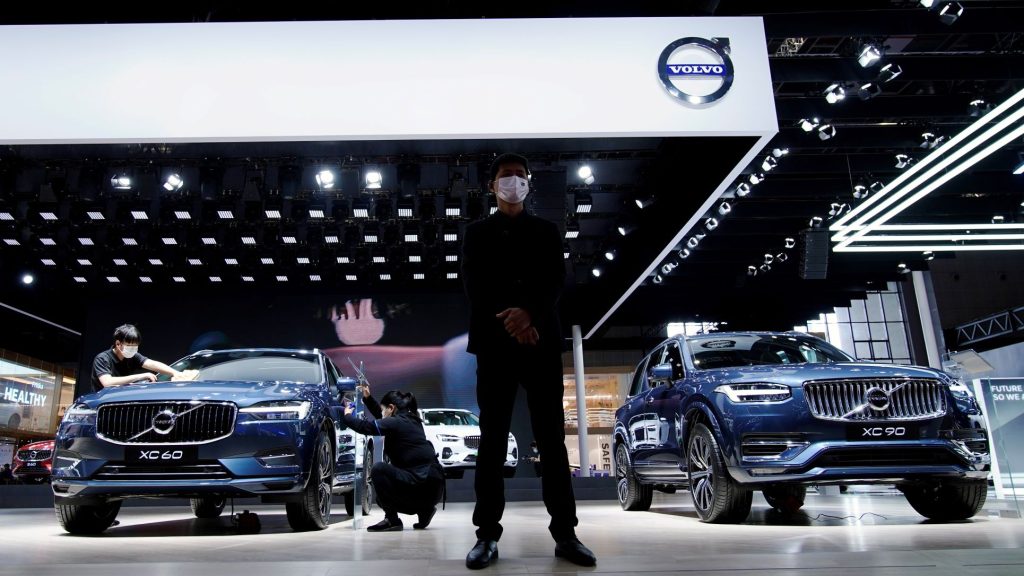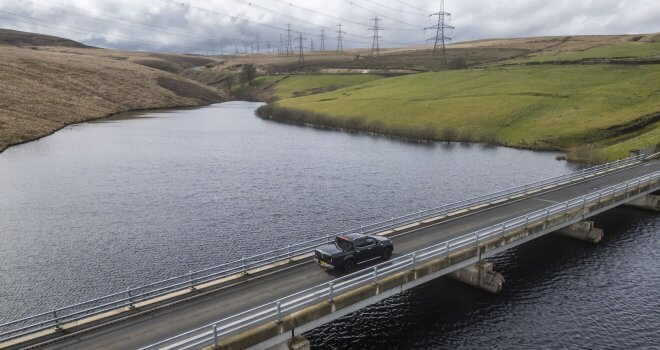Volvo Reverses Course On Full Electrification, Citing Market Uncertainty

In a surprising shift, Swedish carmaker Volvo has shelved its ambitious plan to produce only electric vehicles (EVs) by 2030, blaming shifting market conditions and consumer hesitance. The company, known for its environmental leadership, now plans to include hybrid models in its lineup by the end of the decade, marking a significant retreat from the bold target it announced just three years ago.
Volvo, which had positioned itself as a leader in the automotive industry’s push toward electrification, is the latest manufacturer to temper its ambitions. The decision reflects growing industry-wide concerns over waning EV demand in key markets and the financial risks posed by global trade tensions. Volvo joins the likes of General Motors and Ford in scaling back EV targets as consumer demand stagnates, and international tariffs disrupt the supply chain for electric vehicles produced in China.
Despite the change, Volvo insists that its commitment to electrification remains strong. Jim Rowan, Volvo’s CEO, acknowledged that the transition to an all-electric future would not be as smooth as once envisioned. “We are resolute in our belief that our future is electric,” Rowan said in a statement, “but it is clear that the transition will not be linear, and customers and markets are moving at different speeds.”
Market Challenges Undermine Ambitions
The company cited several challenges behind its decision to revise the 2030 target. The slow rollout of EV charging infrastructure, the recent withdrawal of government incentives for EV purchases, and increased tariffs on China-made EVs have all contributed to a challenging environment. Volvo, majority-owned by Chinese car giant Geely, is particularly vulnerable to the impact of tariffs on Chinese exports, as it manufactures many of its vehicles in China.
The EV market has also faced softening demand. In July, registrations of electric vehicles in the European Union plummeted by nearly 11%, highlighting the challenges of consumer reluctance. Independent analyst Anna McDonald echoed these concerns: “Consumers are still worried about charging access and the higher upfront cost of electric cars,” she told The Guardian. “Tariffs on Chinese-made cars also complicate the situation, as manufacturers are reluctant to absorb these costs.”
Adding to the complexity is the move by several Western governments to impose tariffs on China-made EVs, accusing China of unfairly subsidizing its EV industry. This has triggered a tit-for-tat trade dispute, with China vehemently denying the allegations and branding the tariffs as “discriminatory.” The mounting geopolitical tensions have raised fears of a broader slowdown in global EV production and sales.
Hybrids to Bridge the Gap
Under its revised plan, Volvo aims to ensure that at least 90% of its lineup by 2030 will consist of electric vehicles and plug-in hybrids. The company also left the door open to producing a small number of mild hybrids—traditional cars with limited electrical assistance. While this is a far cry from the company’s previous pledge of full electrification, it reflects the growing industry consensus that the road to a green future may need more time.
Volvo’s pivot echoes similar moves by its competitors. Last month, Ford announced it was scrapping plans for a fully electric three-row SUV and delaying the release of its next electric pickup truck. Meanwhile, General Motors has also scaled back its EV production targets.
As the industry grapples with unpredictable market conditions, Volvo’s recalibration serves as a stark reminder that the path to a zero-emissions future is more complicated than it once seemed. The green revolution is still in motion, but it’s hitting roadblocks that require a more nuanced approach than a simple switch to all-electric.
A Bump in the Road for the EV Revolution?
For now, Volvo’s revised plan suggests a more flexible approach to the future of driving, where hybrids will play a key role in bridging the gap between combustion engines and electric power. Though the goalposts have shifted, the automaker is betting that a balanced strategy will better navigate the evolving landscape.
With changing market dynamics and trade wars clouding the horizon, Volvo’s decision to backtrack on full electrification may be a sign that the industry’s EV dreams will take longer to fully materialize. Whether this signals a temporary pause or a deeper shift remains to be seen—but for now, it’s clear that the road to electric is not as smooth as once imagined.
Volvo’s new strategy involves a more flexible approach to electrification, moving away from its previous commitment to selling only electric vehicles (EVs) by 2030. Instead, the company now plans to offer a mix of fully electric cars, plug-in hybrids, and a small number of mild hybrids by that date.
The company still aims for around 90% of its vehicle output to be electric or plug-in hybrids by 2030 but acknowledges that it will also produce some traditional combustion engine vehicles with limited electrical assistance. This shift reflects a recognition that the transition to electrification will not be uniform across all markets and consumers, and that economic, infrastructure, and geopolitical challenges are slowing the shift.
Key elements of Volvo’s updated strategy include:
- Maintaining focus on electrification, but balancing it with plug-in hybrids to bridge the gap between internal combustion and electric vehicles.
- Addressing market conditions, such as the slow rollout of charging infrastructure and consumer reluctance to adopt EVs due to cost and charging concerns.
- Adapting to trade pressures, particularly tariffs on Chinese-made EVs, which have increased the cost of producing and importing electric cars.
- Flexibility in offerings, with hybrids and mild hybrids remaining part of the lineup as the company navigates the evolving global automotive market.
In essence, Volvo is maintaining its long-term vision for an electric future, but its revised strategy allows for a more gradual and market-responsive transition.




